May 26, 2025
What Students Learn About Sustainability in the Galápagos
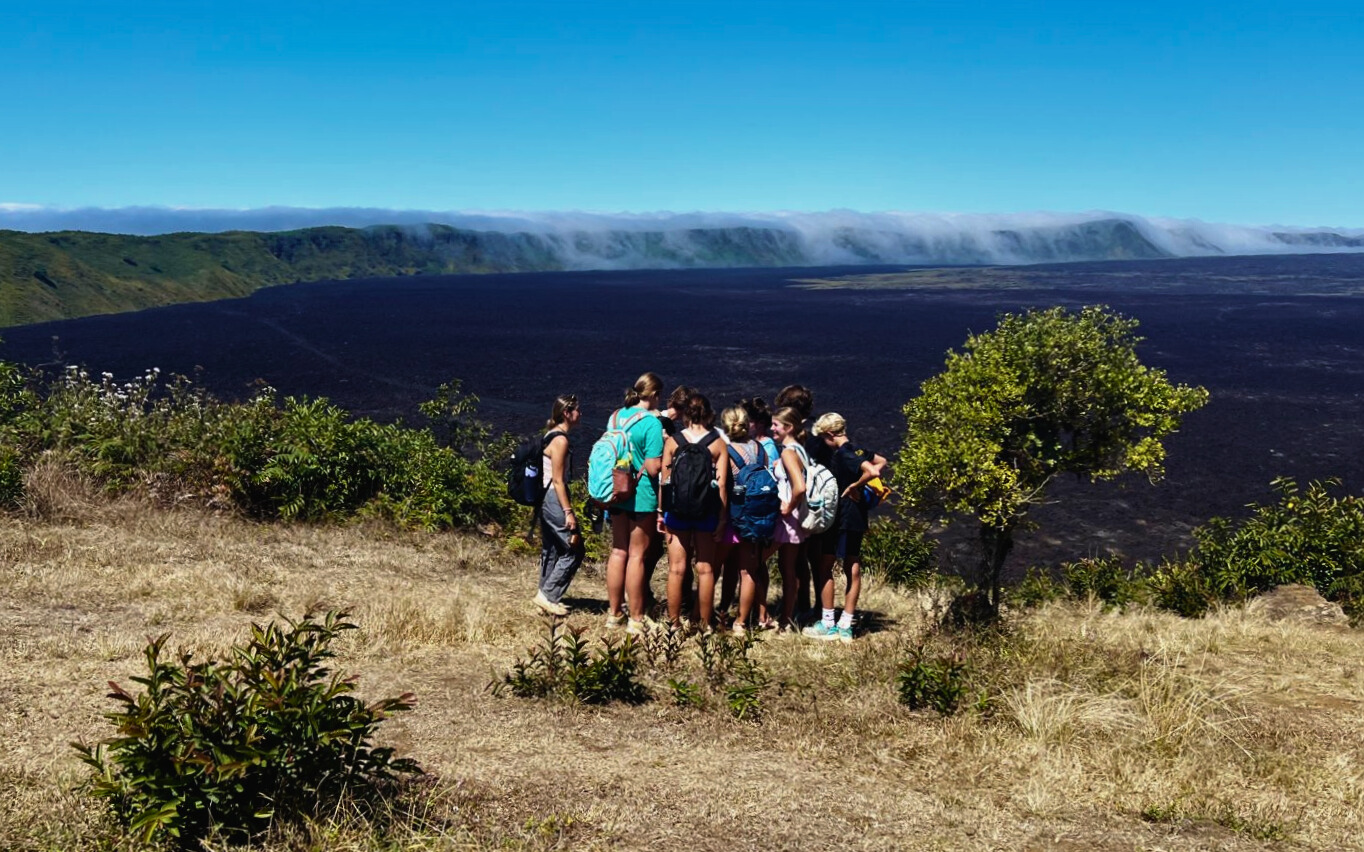
What if your classroom had sea lions lounging by the shore, giant tortoises wandering through the highlands, and volcanic craters as your science lab? Welcome to the Galápagos Islands—where sustainability isn’t just something you read about; it’s something you live.
For students, the Galápagos is a once-in-a-lifetime chance to explore one of the world’s most fascinating ecosystems while discovering how people and nature can thrive together. That’s why many educational travel companies and traveling teachers choose it as a top destination for student tours. Whether your students are budding marine biologists, eco-activists, or simply curious adventurers, there are powerful, hands-on lessons waiting around every corner.
Curious how sustainability learning comes to life on a Galakiwi tour? Explore our Galápagos educational trips.
What Your Students Will Gain
- Firsthand insight into conservation in action, giving them a real-world perspective on environmental efforts.
- A deeper understanding of ecosystems, biodiversity, and climate solution topics that they may have only explored in textbooks until now.
- Experience collaborating with local communities and youth, which fosters cultural connection and shared learning.
- Personal growth through travel, reflection, and outdoor learning—helping students build confidence, empathy, and a lifelong curiosity about the world.
🌱 1. Nature First: How the Galápagos Protects What Matters
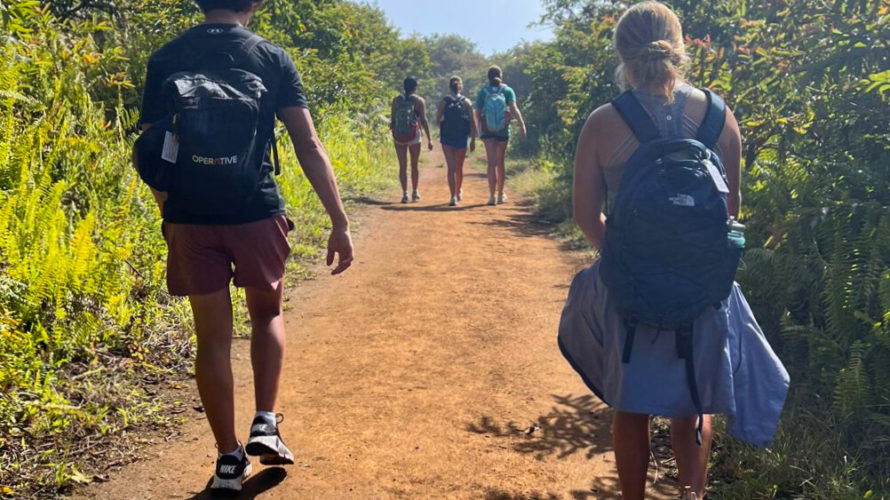
In the Galápagos, nature comes first, and everyone follows the rules to keep it that way. With over 97% of the land protected as national park, visitors quickly learn that preserving these unique ecosystems takes care, planning, and respect.
What students experience: They’ll walk marked trails alongside expert guides, spot wildlife in their natural habitats, and understand why certain areas are off-limits. These experiences highlight the importance of setting boundaries to protect vulnerable species and environments.
Lesson tie-in: This directly connects to classroom topics like conservation zoning, land-use planning, and the role of protected areas in global biodiversity efforts.
♻️ 2. Islands Don’t Do “Throwaway“
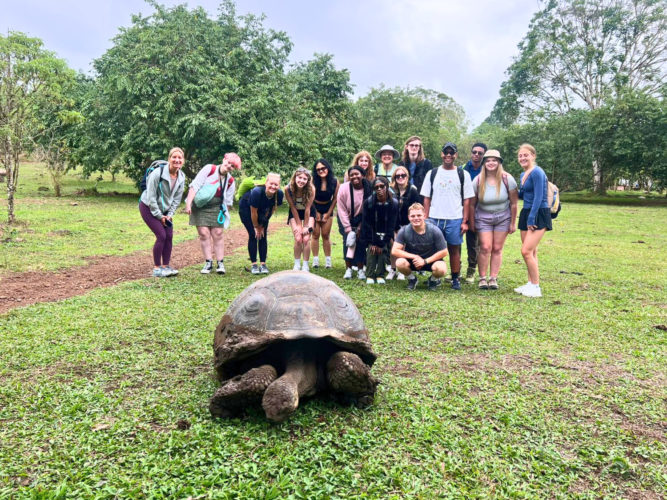
On remote islands, every bit of waste counts. The Galápagos has limited landfill space and relies on long supply chains. As a result, many single-use plastics are banned, and creative waste solutions are embraced.
What students experience: They learn how locals shop using reusable containers and bags. They explore community recycling and composting efforts. They also see how daily choices—like refilling water bottles or skipping plastic—contribute to a more sustainable way of life.
Lesson tie-in: This introduces key concepts like the circular economy. It also shows how pressure on resources leads to innovation and long-term thinking.
⚡ 3. Solar Panels, Wind Turbines & Energy That Makes Sense

The Galápagos doesn’t just talk about clean energy—it runs on it. Wind turbines spin on San Cristóbal’s hills. Solar panels power homes, schools, and public buildings. Students see what a renewable future can really look like.
What students experience: They learn how the islands reduce fossil fuel use through wind and solar energy. They’ll even land at Baltra Airport, one of the world’s first ecological airports. It runs on renewable energy and was built using recycled materials.
Lesson tie-in: This connects to classroom topics like renewable energy, green infrastructure, and real-world climate solutions.
🐢 4. It Takes a Village to Protect a Tortoise
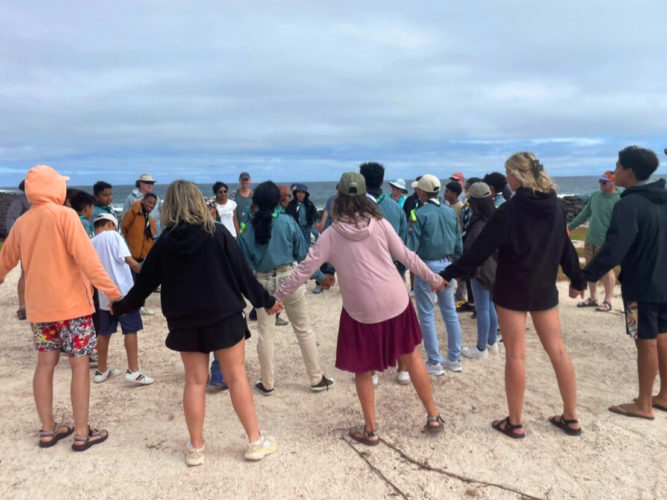
Conservation in the Galápagos isn’t just for scientists. Tour guides, fishermen, teachers, and students all play a role in protecting nature. It’s a powerful example of sustainability led by the local community.
What students experience: They connect with local guides who share what it’s like to grow up in the Galápagos. They visit conservation and breeding centers, take part in hands-on sustainability projects, and join local youth for beach cleanups and community activities.
Lesson tie-in: This brings civic responsibility, environmental leadership, and real-world community engagement into focus.
🌊 5. Dive In: Learning from Life Underwater
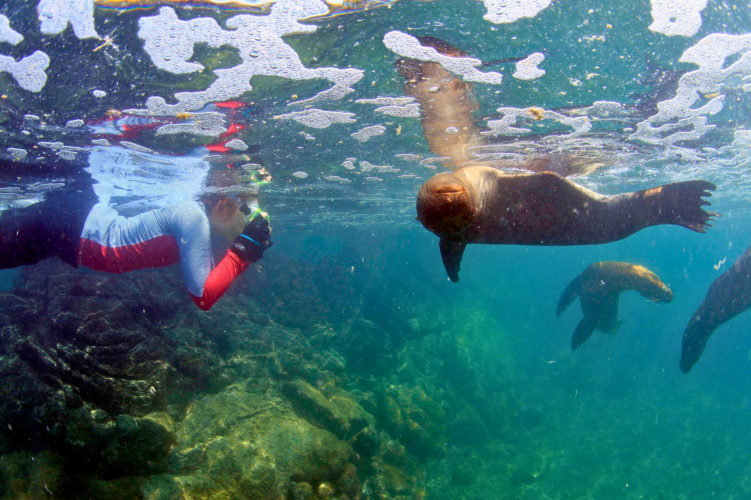
The Galápagos Marine Reserve is one of the richest underwater environments on Earth. Snorkeling with sea turtles, penguins, and reef sharks brings textbook lessons to life. Students gain a clear understanding of biodiversity and how ecosystems work.
What students experience: They snorkel around lava formations and spot dozens of marine species in a single outing. They learn how everything in the ocean is connected, from coral to top predators.
Lesson tie-in: This supports lessons in food webs, marine biology, and ocean conservation.
🌟 Why It Sticks: Real Experiences, Real Impact

The Galápagos isn’t just a cool place to visit—it’s a place that changes how students think. It gives them stories, perspectives, and purpose. From wildlife encounters to cultural exchange, from hands-on science to big-picture questions about our planet, it opens their minds and helps them see the world and their role in it differently.
Looking to bring your students to the Galápagos?
For students, this is a once-in-a-lifetime chance to experience real-world learning. That’s why so many educational travel companies and teachers choose it as a top destination for student tours. Whether you’re planning for a class, a school group, or an educational travel program, our Galápagos tours are designed to combine learning with adventure seamlessly.
